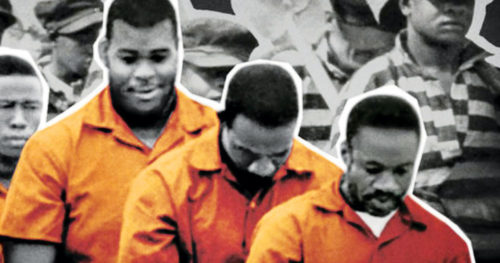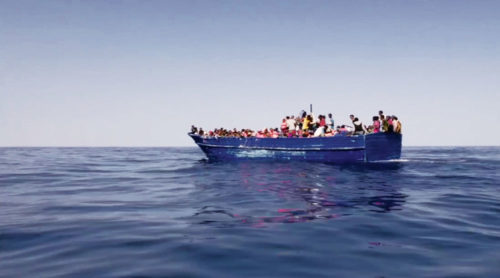
Next month’s column will cover the Oscar films nominated for Best Picture, but this month I chose to review two of the top documentaries from 2016. Both of these wonderful films should be nominated for Best Documentary Feature, and both have a great chance at winning.
The Best Documentary Award at the Oscars is tricky business. A few years ago, a friend and I discussed this very dilemma. He said “This year’s nominees included a film about Latin American child immigrants, a film about Daniel Eisenberg, a film about revolution in Burma, and a film about the corporate-industrial-food complex. And what wins? A film about dolphins.” Of course he was talking about The Cove, winner of the Best Documentary Feature award in 2010. But as I pointed out to him, the category is Best Documentary Feature, not “Most Important Issue.” A documentary is still a film, a piece of art composed by a team—led by a director—but also including writers, editors, a cinematographer, camera operators, assistants, and producers. It is still a film. That is how I look at documentaries.
13th (2016)

13th
This smart, and polemical, documentary chronicles the U.S. prison system and the racial inequalities therein. The film takes a somewhat traditional approach to the form, incorporating certain historical artifacts, graphs, animation, news coverage, interviews, and intertitles. Director Ava DuVernay is no stranger to civil rights media, having directed the powerful Selma just a few years ago. The sum total is a tight package that strongly makes its points and enables her vision.
The central point is very easy to discern: the prison system incarcerates blacks at a disproportionate rate. We are given a sound historical lesson on the prison system going back to the slave era, and experts back up the points with contemporary interviews to support that view. The material is presented logically, viscerally, and personally. We see the bureaucratic side as well as the human side, and we even get opposing points of view from all parts of the political spectrum. The material itself will win over the audience, but the technical aspects are also highly professional and detailed—in particular, the editing. That wins it for me.
Reactions to the film have been along predictable political lines: those on the Right dismiss the film as Leftist propaganda while those on the Left point to the film as an exposé of a corrupt political system instigated by the Right. The problem with these views is that they miss the most scathing part of the film: everyone is implicated. The Clinton and Obama administrations are excoriated as much as the Reagan, Bush, and George W. Bush administrations. DuVernay gives a general criticism of the entire system and both political parties. That is exactly what makes this film so powerful.
You will like this if you enjoyed An Inconvenient Truth, Cartel Land, and/or Food Inc.
Available on Netflix.
Fire at Sea (2016)

Fire at Sea
If 13th is a more traditional documentary, Fire at Sea is the polar opposite. Gianfranco Rosi’s film is a poetic, languid, even ethereal look at the intersection of mass migration and the daily life of Italian islanders. Fire at Sea finds the beauty in simple, static-camera takes of interesting images—a helicopter taking off at night or a pregnant woman with twins being examined by a doctor (where neither can speak the other’s language). It is in moments such as these that we understand the power of film, and it makes us feel very much like the Parisians watching the first filmed images from the Lumière brothers in 1895: we are seeing things for the first time.
Rosi’s film is the Italian Oscar entry for Best Foreign Language Film as well as a strong contender for Best Documentary Feature. It chronicles life on the Italian island of Lampedusa—a small outpost far off the coast of Sicily, equidistant from both Italy and the coasts of Tunisia and Libya. It is a destination point for Africans migrating to Europe—a crossing that is both treacherous and intricate. It is literally finding a needle in a haystack: a small speck of an island in the vast Mediterranean Sea. The images of those immigrants are heartbreaking and hardening. The verisimilitude of their pain and suffering is poignant.
While the film spends ample time on the immigrants and those who save and treat them, we also spend time on land as well. The film follows a young boy, Samuele, who goes about his daily life: making and playing with a slingshot, hanging out with his friend, talking to his father and grandmother. As immigrants fight for their lives just off the coast, life still goes on for the inhabitants of the island. The juxtaposition of the two (unrelated) stories is the masterstroke of the film: that simple life is exactly what the immigrants are striving toward. That’s all.
You will like this if you enjoyed The Act of Killing, The Missing Picture, and/or Terraferma.
Opened at the Sie Film Center on 12/30.
Vincent Piturro, Ph.D., is an associate professor of Cinema Studies at Metropolitan State University of Denver. He can be reached at vpiturro@msudenver.com.




0 Comments